Hiking
Are you ready to experience the thrill of hiking in some of the most breathtaking locations on Earth? From majestic mountain summits to sparkling lakes and cascading waterfalls, the great outdoors has something for everyone. Whether you're a seasoned hiker or a beginner looking to explore the beauty of nature, there are countless trails and paths to discover.
Hiking is a fantastic way to get exercise and clear your mind. Fresh air, stunning views, and the sense of accomplishment that comes with reaching a summit are all great motivators. Hiking can also be a great way to connect with friends and loved ones, or even to find some solitude and introspection.
Trail options are almost endless, but some popular choices include national parks, state parks, and local conservation areas. These places often have well-marked trails, maps, and helpful staff who can point you in the right direction. If you're looking for a more remote or challenging experience, you may want to consider heading to a mountain range or wilderness area.
Before you hit the trail, it's important to come prepared. Make sure you have the right gear, such as a good pair of hiking boots, a backpack, and plenty of water and snacks. It's also a good idea to let someone know your plans, so that they can check in on you and call for help if necessary.
When it comes to choosing a hike, there are many factors to consider. Are you looking for a short, easy stroll or a challenging all-day adventure? Do you want to see breathtaking views or explore a dense forest? Consider your fitness level, the weather forecast, and any potential hazards before you set out.
No matter where you go or what you do, hiking is a rewarding and enriching activity that everyone should try at least once. So lace up your boots, pack your backpack, and hit the trail – the adventure of a lifetime is waiting for you!
Hiking Etiquette
Be courteous.
When on any trail it is important to be polite and courteous of others. Keep in mind that sounds can carry.
Some common courtesies on the trail include:
- Acknowledging other adventurers! Don't be afraid to politely greet others along the way.
- Give other groups plenty of space.
- When approaching a fellow-hiker from behind do the courteous thing of saying something so they are not completely startled when you pass by.
- Keep your technology volume levels low.
- If you need to take a break, step off the trail.
- Respect nature. One popular saying goes, "Take nothing but pictures and leave nothing but footsteps." If you pack it in, pack it out.
- Clean up after your dog.
Be informed.
Be sure to do your research prior to your hike in order to review rules and regulations of the particular location you are at. Be aware of any wildlife which could be near you. Check the weather too. Know your stuff before you step out on the trail.
Be prepared.
Don't forget your 10 essentials:
- Navigation: map, compass, GPS
- Hydration: water, sports drinks
- Sun protection: sunscreen, sunglasses
- Extra clothes: socks, rain gear, insulation
- Nutrition: food for on the trail
- Firestarter: matches, lighter
- Illumination: headlamp, flashlight
- First-aid: it's better safe than sorry
- Tools: knife, trowel
- Shelter
Other things to consider:
- Supportive shoes will help make your hiking experience great. Unreliable shoes can be a tripping hazard.
- Be sure to let someone know where you are going and an estimated time which you will return again
Read Trailhead Guidelines.
Each trail has is unique. Trail makers and kiosks provide valuable information to help hikers avoid getting lost and regulate the use of trails. Various kinds of signs include:
- Informational signs
- Warning signs
- Entrance/exits
- Regulatory signs
- Directional change indicating signs
- Destination markers
- Boundary markers
Right of Way
Respect others by keeping to the right side and passing on the left. Those who are going uphill typically have the right of way but sometimes hikers going up do prefer to step aside to catch their breath. The typical order or "trail hierarchy" includes horses first, hiker's second, and bikers third.
Let Cairns Be.
Cairns are stacks of rocks with a purpose or meaning which often times will mark trails and summits. While it might be tempting to topple them over, the respectful thing to do is simply let the rocks be. Though the temptation to build your own abstract art while on a trail may be high, avoid cairn construction altogether. Because cairns are often used to mark a trail, spontaneously placed cairns can lead other hikers in the wrong direction. This being said, be cautious yourself and avoid blindly following rock pyramids.
Stay on the Trail.
Veering off the trail is a safety hazard. It's also important to stay on designated trails in order to protect animals habitats and prevent damage to the land. When vegetation is smashed or destroyed it can impact the vital natural environments and food sources of wildlife. Messing with rocks can also leave visible damage to elements which are priceless and irreplaceable. Dislodging rocks can upset the trail and present difficulties for future hikers. Don't cut switchbacks.
Don't Feed Wildlife.
Watch wildlife from the trails. For the most part, animals are pretty good at keeping to themselves when you do the same. Let them be. Wildlife have better health and safety when they have not been exposed to people. Do not do anything which will attract the animals to you. Keep your distance and everybody will be better off.
Be safe. Be courteous. Have fun.
Here's some of our favorite hiking trails
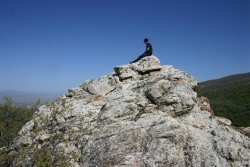
Mueller Park Trail
Bountiful, Utah
2.9 miles SE of Bountiful, UtahThe Mueller Park Trail is a great year-round trail that's almost right off the road. It's considered moderate difficulty. It's a gradual grade with beautiful views. It's a popular...
Cross-country Ski, Hike, Mountain Bike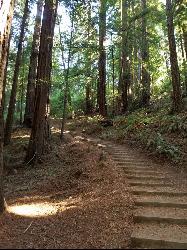
Muir Woods National Monument
Mill Valley, California
1.9 miles W of Mill Valley, CaliforniaThere are several suggested hikes on the main trail leaving from the visitors center. The longest, a loop, is about 2 miles. It is the only one that leaves the boardwalk. It has some elevation...
Hike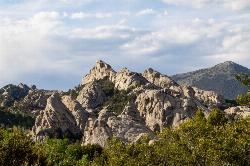
City of Rocks National Reserve
Malta, Idaho
23.3 miles SW of Malta, IdahoThe City of Rocks, or "The City" as locals call it, is one of the best places in the country to go rock climbing. Throughout the valley granite spires dominate the skyline, reaching...
Camp, Hike, Horseback, Mountain Bike, Rock Climb
Muir Beach
Muir Beach, California
0.3 miles E of Muir Beach, CaliforniaMuir Beach is a little gem nestled away in the hills North of San Francisco, not far from the Muir Woods National Monument. There's a great beach and an entire network of trails. To get to the...
Hike, Swim 7.9 mi
Borah Peak
Mackay, Idaho
18.7 miles NW of Mackay, IdahoThis is the highest peak in all of Idaho, standing 12,662 ft along the Lost River Range. There are several routes that can be taken in order to reach the summit with different levels of difficulty...
Hike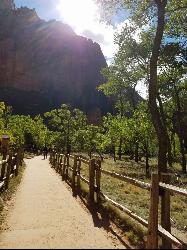
Riverside Walk
Springdale, Utah
7.6 miles N of Springdale, UtahThe Virgin River has many moods, from quiet and slow to a raging torrent. This beautiful, shaded walk meanders through forested glens, following the path of the stream ever deeper into the...
Hike
Champoeg State Park
Saint Paul, Oregon
4.9 miles NE of Saint Paul, OregonChampoeg State Park (commonly pronounced SHAM-poo-EE) is a historic pioneer site as well as a beautiful outdoor recreational area. The Native Americans originally pronounced it CHAM-po-EGG, but it...
Camp, Disc Golf, Hike, Mountain Bike 0.5-3.5 mi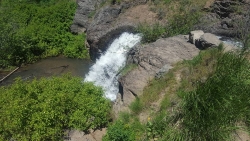
Webster's Dam
Ririe, Idaho
9.8 miles NE of Ririe, IdahoAlso known as Manmade Falls or the Woodmansee Dam, Webster Dam is an abandoned dam located deep in Moody Creek canyon, the dam was abandoned when sediment built up behind the dam which then...
Camp, Hike, Mountain Bike 7.6 mi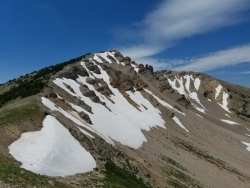
Mount Jefferson
Island Park, Idaho
9.7 miles N of Island Park, IdahoMount Jefferson, at 10, 203 feet is the highest point in the Centennial Mountains, a small, local range on the border of Idaho and Montana a little west of Yellowstone. These mountains consist of a...
Hike 3.6 mi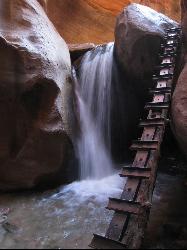
Kanarraville Falls
Kanarraville, Utah
0.5 miles E of Kanarraville, UtahKanarraville falls (also known as Kanarra falls) located outside of Cedar City, Utah is a must-see stop for any adventurous souls. Kanarra Falls is a medium length hike, both on trail and through...
Hike, Swim- Plan Ahead and Prepare. Know the regulations and special concerns for the area you'll visit. Prepare for extreme weather, hazards, and emergencies. Schedule your trip to avoid times of high use. Visit in small groups when possible. Consider splitting larger groups into smaller groups. Repackage food to minimize waste. Use a map and compass to eliminate the use of marking paint, rock cairns or flagging.
- Travel & camp on durable surfaces. Durable surfaces include established trails and campsites, rock, gravel, dry grasses or snow. Protect riparian areas by camping at least 200 feet from lakes and streams. Good campsites are found, not made. Altering a site is not necessary.
- Dispose of waste properly. Pack it in, pack it out. Inspect your campsite and rest areas for trash or spilled foods. Pack out all trash, leftover food and litter. Deposit solid human waste in catholes dug 6 to 8 inches deep, at least 200 feet from water, camp and trails. Cover and disguise the cathole when finished. Pack out toilet paper and hygiene products. To wash yourself or your dishes, carry water 200 feet away from streams or lakes and use small amounts of biodegradable soap. Scatter strained dishwater.
- Leave what you find. Preserve the past: examine, but do not touch cultural or historic structures and artifacts. Leave rocks, plants and other natural objects as you find them. Avoid introducing or transporting non-native species. Do not build structures, furniture, or dig trenches.
- Minimize campfire impacts. Campfires can cause lasting impacts to the environment. Use a lightweight stove for cooking and enjoy a candle lantern for light. Where fires are permitted, use established fire rings, fire pans, or mound fires. Keep fires small. Only use sticks from the ground that can be broken by hand. Burn all wood and coals to ash, put out campfires completely, then scatter cool ashes.
- Respect wildlife. Observe wildlife from a distance. Do not follow or approach them. Never feed animals. Feeding wildlife damages their health, alters natural behaviors, and exposes them to predators and other dangers. Protect wildlife and your food by storing rations and trash securely. Control pets at all times, or leave them at home. Avoid wildlife during sensitive times: mating, nesting, raising young, or winter.
- Be considerate of other visitors. Respect other visitors and protect the quality of their experience. Be courteous. Yield to other users on the trail. Step to the downhill side of the trail when encountering pack stock. Take breaks and camp away from trails and other visitors. Let nature's sounds prevail. Avoid loud voices and noises.

















